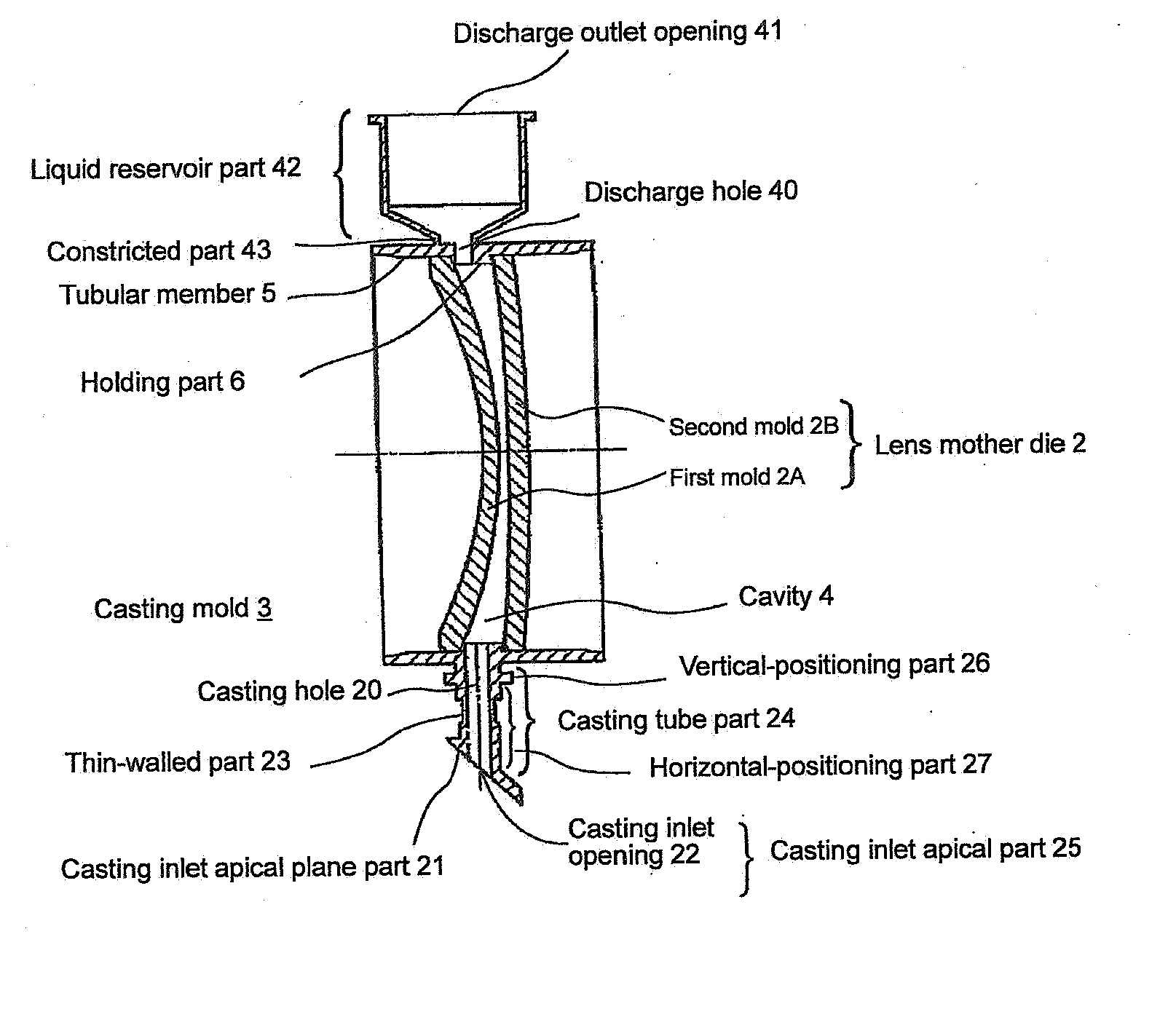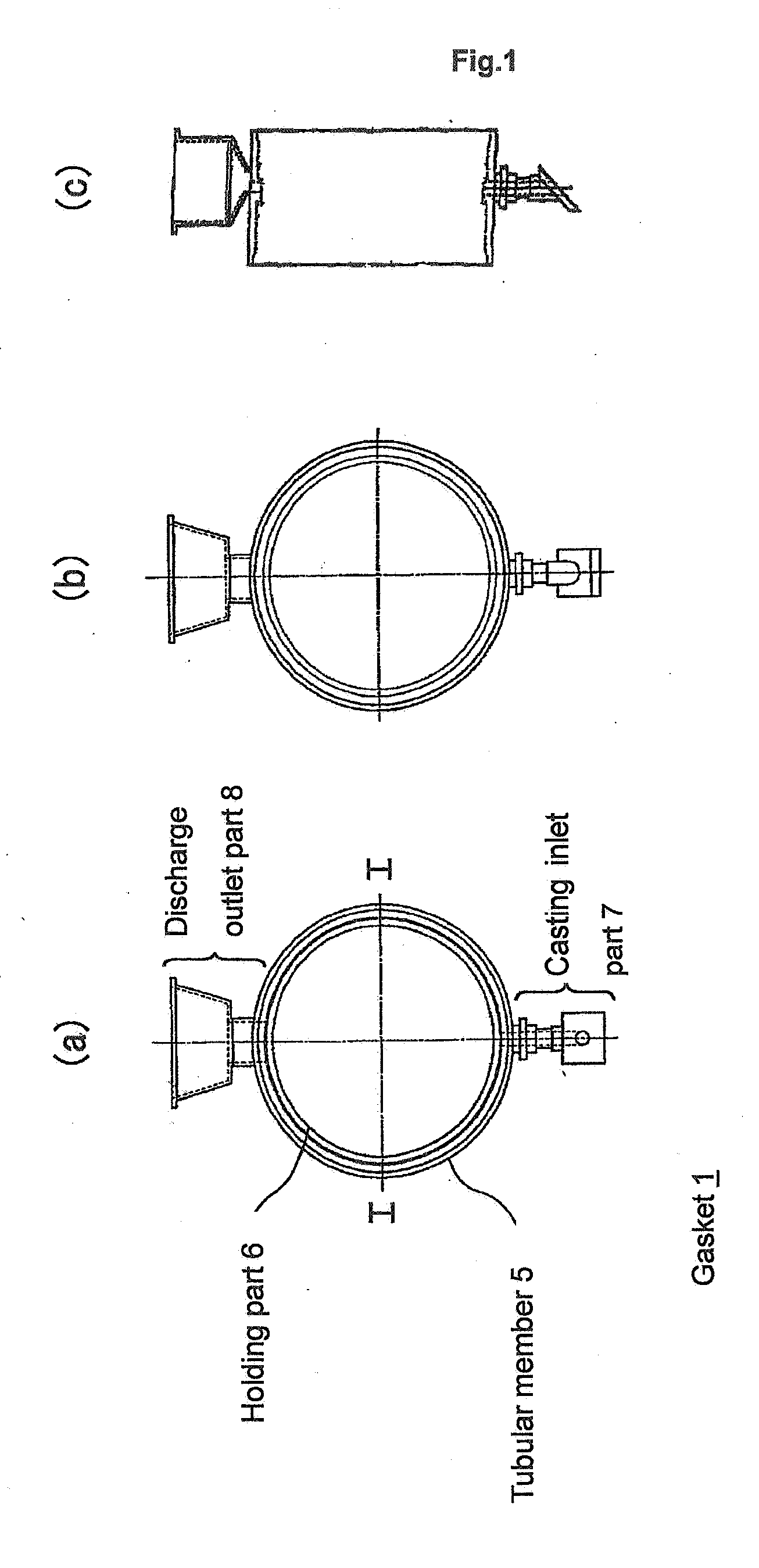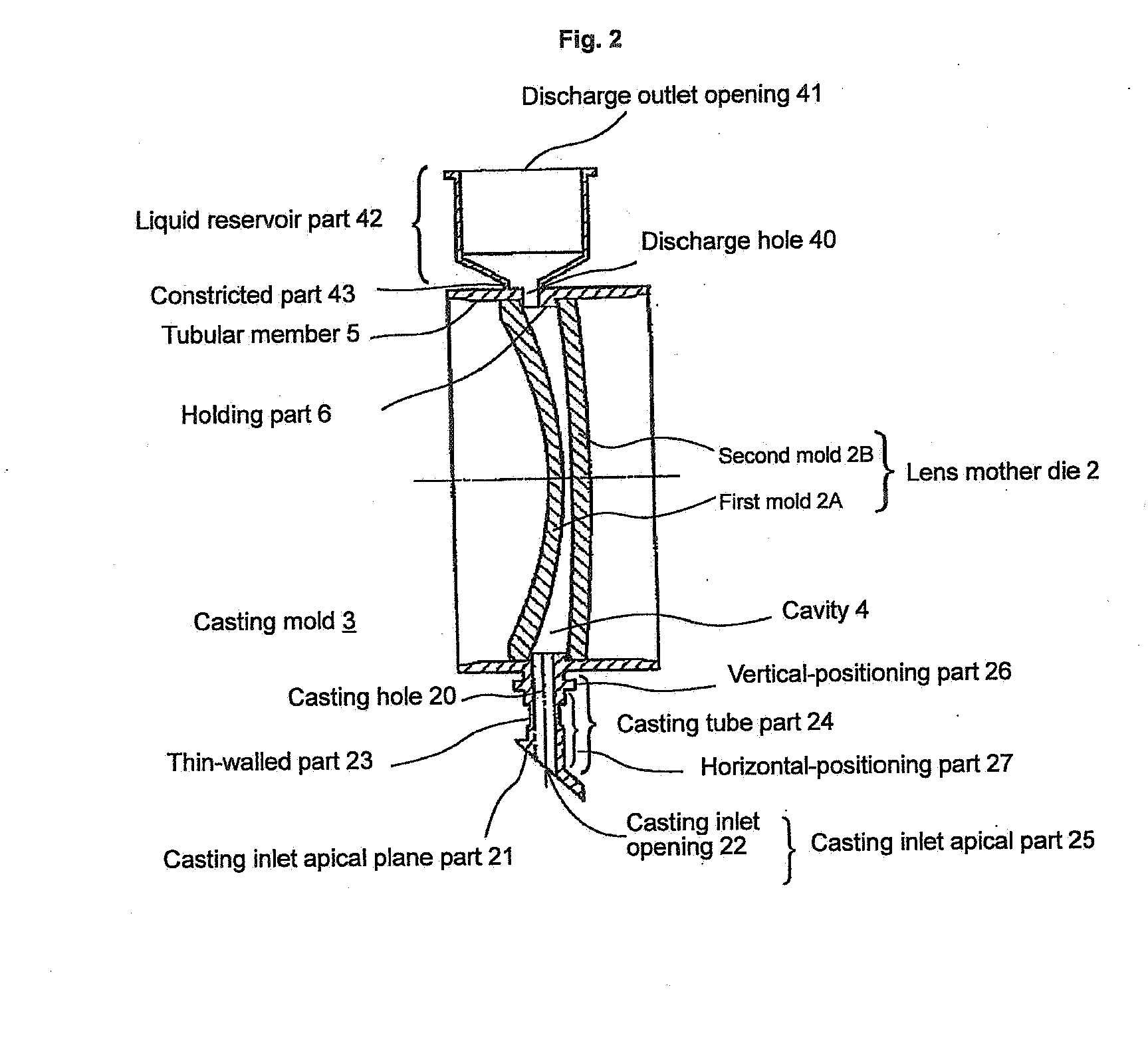Method Of Manufacturing Plastic Lens, Gasket For Molding Plastic Lens, Casting Mold For Molding Plastic Lens, Casting Jig For Plastic Lens Starting Material Liquid, Holding Member For Plastic Lens Casting Mold, And Plastic Lens Manufacturing Apparatus
a technology for plastic lenses and gaskets, which is applied in the field of plastic lens manufacturing, can solve the problems of optical defects in the molded lens, the risk of the fitting between the nozzle and the gasket eventually being affected, and the difficulty of removing bubbles in the cavity, so as to reduce bubbles and optical defects, high initial polymerization rate, and high viscosity
- Summary
- Abstract
- Description
- Claims
- Application Information
AI Technical Summary
Benefits of technology
Problems solved by technology
Method used
Image
Examples
example 1
[0339] To 100 weight parts of isocyanate terminal prepolymer with an isocyanate group content of 13 percent comprised of polytetramethylene glycol with an average molecular weight of 400 and 4,4′-methylenebis(cyclohexyl isocyanate) were added in advance 0.024 weight part of monobutoxyethyl acid phosphate and 0.036 weight part of di(butoxyethyl)acid phosphate, and the mixture was uniformly dissolved and degassed [Component (A)]. 25.5 weight part quantity of a mixture of 3,5-diethyl-2,4-toluene diamine and 3,5-diethyl-2,6-toluene diamine was employed as component (B).
[0340] The temperature of the liquid immediately after mixing of components (A) and (B) was made 55° C., the temperature immediately prior to casting into the casting mold was made 52° C., the casting mold was positioned vertically, and carbon dioxide was introduced into the casting mold at a discharge rate of 10 L / min for about 5 seconds immediately prior to casting. Then, in the casting step, a tube equipped with a jig...
example 2
[0341] With the exception that the casting mold was heated so that the temperature immediately prior to casting into the casting mold was made 65° C., the same components (A) and (B) were employed and the same operations were conducted as in Example 1. Table 1 gives the results of evaluation of the generation of bubbles and optical defects of the plastic lenses thus obtained.
example 3
[0342] With the exception that the discharge rate of carbon dioxide was 15 L / min., the same components (A) and (B) were employed and the same operations were conducted as in Example 1. Table 1 gives the results of evaluation of the generation of bubbles and optical defects of the plastic lenses thus obtained.
PUM
| Property | Measurement | Unit |
|---|---|---|
| tilted angle | aaaaa | aaaaa |
| tilted angle | aaaaa | aaaaa |
| length | aaaaa | aaaaa |
Abstract
Description
Claims
Application Information
 Login to View More
Login to View More - R&D
- Intellectual Property
- Life Sciences
- Materials
- Tech Scout
- Unparalleled Data Quality
- Higher Quality Content
- 60% Fewer Hallucinations
Browse by: Latest US Patents, China's latest patents, Technical Efficacy Thesaurus, Application Domain, Technology Topic, Popular Technical Reports.
© 2025 PatSnap. All rights reserved.Legal|Privacy policy|Modern Slavery Act Transparency Statement|Sitemap|About US| Contact US: help@patsnap.com



